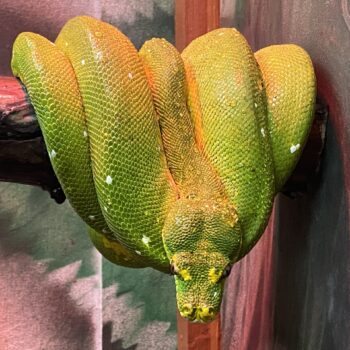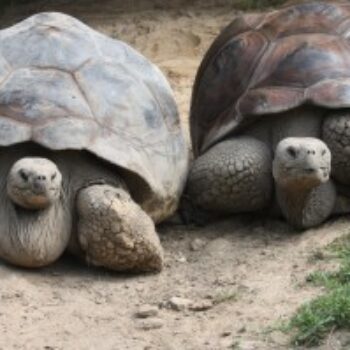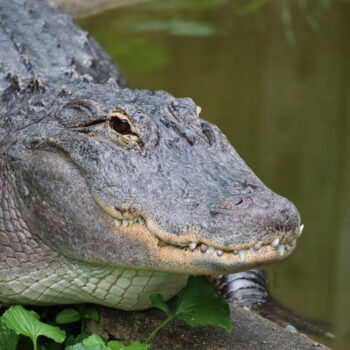Reptiles are cold-blooded. What does this mean? It means they depend on the environment to keep them warm or to cool them down. Reptiles are egg laying vertebrates that are covered with scales. They are divided into four Orders including: Squamata (snakes & lizards), Testudines (Tortoises, Turtles, and terrapins), crocodilia (crocodiles & alligators), and Sphenodontia (which includes Tuataras from New Zealand; Scovill Zoo does not have a representative from this Order). Body shapes vary greatly for Reptiles; from the long slender snakes to the short, stout, shell-covered bodies of turtles. The scales of reptiles protect them from abrasion, attacks from predators and parasites, and dehydration. Pigment below the scales give the animal is coloring and marking. The markings and coloring are useful for camouflage or for display. Reptile’s senses are better developed than those of amphibians and have some specialized sense organs that other animals do not have. Eyes are often large and well developed, although many snakes have poor eyesight. Lizards have a light sensitive area on top of their heads known as the “third eye.” Some snakes have heat sensing organs in their face to help them locate small animals. Reptiles lay eggs. The eggs are laid in moist areas near water, under leaves or in burrows. There are a few species where the female will carry the eggs until hours before the eggs will hatch, or the eggs hatch inside the female and then are born.



